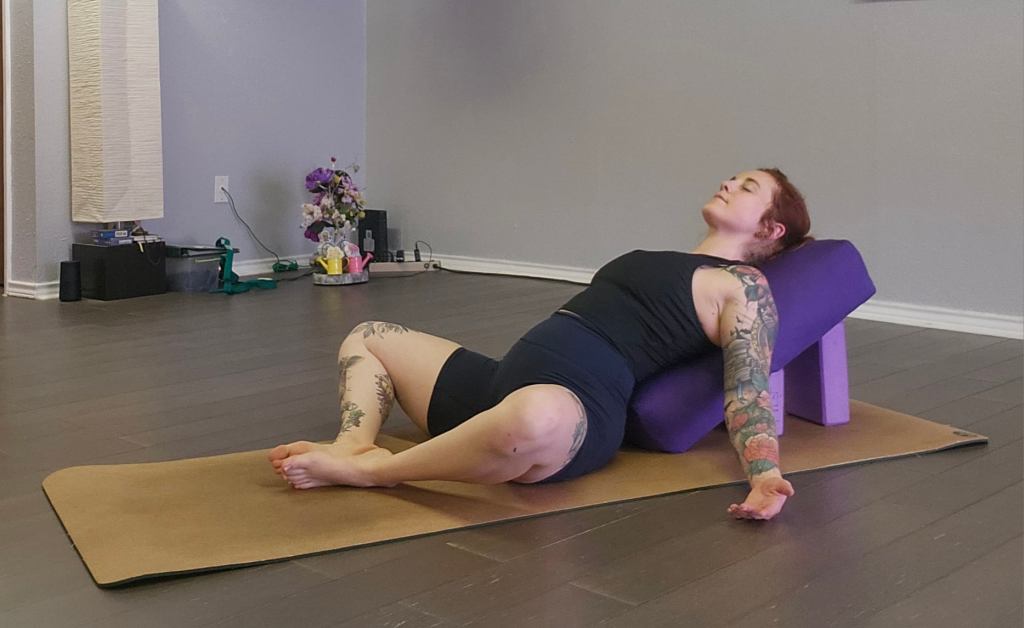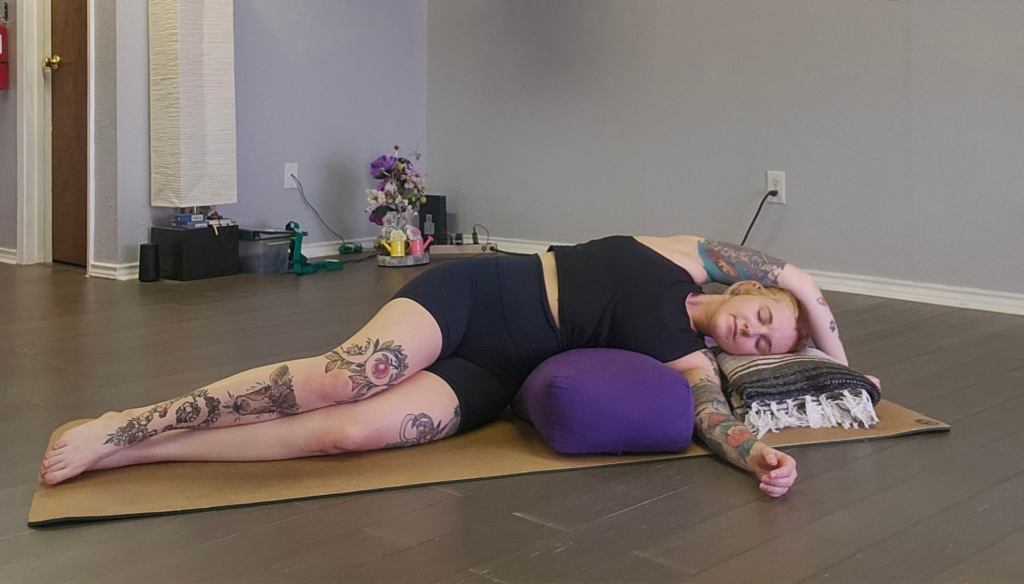Restorative Yoga: The Benefits For Your Body & Your Mind
In current times, most people are pretty familiar with the benefits of yoga. By incorporating it into your routine you may improve your flexibility, mobility, balance, and build strength using your own bodyweight, to name a few. Another benefit that is often listed is stress-relief, arguably one of the most important, but I often feel that this one is overlooked. When it comes to fitness, most of us have hopes of seeing physical results in the form of muscle gain and/or weight loss. How we are impacted mentally may not even come to mind.
In this article, I’m going to dig into a specific style of yoga that I truly believe everyone on the planet could benefit from. It may not get your heart rate up, it may not challenge your core strength or your balance, but it will aid in encouraging you to slow down, focus on your breath, and relax for an hour (or however long class is) in the midst of this chaotic world we live in.
So, let’s talk about Restorative Yoga.
First things first. What is Restorative Yoga?
Restorative yoga is a style that is appropriate for all levels, that focuses on creating a deep sense of relaxation physically, mentally and emotionally. In restorative classes, there are typically fewer postures and they are usually held for an extended period of time. I’ve seen articles stating anywhere from 2.5-8 minutes, and then some say 5-20 minutes. So this may vary depending on the preference of the teacher. Most postures will create a passive or gentle stretch within the muscles, emphasizing relaxation. To achieve this, multiple props will often be used to create optimal support. When teaching my classes, I always instruct my students to bring out every prop available to them, and maybe even multiples!
Props You May See Used:
- Bolster
- Blocks
- Straps
- Blankets
- Knee Pads
There will also be an emphasis on breath work and meditation. Ideally, as we hold these stretches we want to stay fully connected with our breath. The deeper we breathe, the more our muscles can relax, potentially allowing us to release deeper into the stretch. This is how we improve our flexibility over time. When it comes to meditation, this experience may vary from class-to-class. Some teachers may periodically guide you through a meditation, while others may let you create your own meditative experience. This element plays a key role in calming the mind.
What are the Benefits of Restorative Yoga?
- Reduces Stress and Anxiety– By soothing the nervous system, our parasympathetic branch is targeted to create a deep sense of calm and relaxation.
- Increases Flexibility– By combining the longer holds of the postures, with relaxation, and deep breathing we are able to help reduce the muscle resistance and move deeper into the stretch.
- May Lower Blood Pressure– One of the biggest contributing factors to high blood pressure is high stress levels. By intentionally moving slowly and breathing deeply, we are able to reduce stress. Additionally, it can also encourage improved blood circulation.
- Improves Sleep Quality– Many of us struggle to sleep at night due to racing thoughts. Practicing Restorative Yoga, especially closer to bed time, calms the body and mind. A quieter mind improves our chances of falling asleep and staying asleep.
Restorative Yoga Poses:
- Supported Balasana (Child’s Pose) – Keeping the big toes together, knees will fall open wide and place a bolster vertically under your torso, allowing your head to rest on it as well. Arms may extend overhead, rest gently at your sides or hand under head as an extra pillow. This pose allows for a gentle opening of the hips, while raising the earth up to you for a less intense stretch and more cushion under the body.

- Savasana (Corpse Pose) with Hip Support– Lie face up, placing folded blanket under head and bolster under hips horizontally. Legs extend straight onto mat, feet reaching for bottom corners. Arms resting on belly or overhead for more expansion in the upper body. This posture is easy to rest in while also creating more opening through the front of the body.

- Reclined Supported Buddha Konasana (Bound Ankle)– Lie face up on bolster, positioned vertically. Knees bent, bottoms of feet come together allowing knees to fall open. Place a block on level 2 below each knee. Arms can rest on belly or open up to make a cactus shape. This posture is a great stretch for the hips and inner thighs, allows for opening in the chest, all while still allowing for comfort with the help of the props that prevent the body from reaching too deep into the stretch. (Tip: You can also create a ramp with the bolster if you’d like more of an incline when you lay back. Place one block on level 2 and the other on level 3 before resting the bolster against it to create an angle)


- Supported Side-Lying Stretch– Place bolster up against the top of the hip in horizontal position, lower side of torso down so bolster rests between your armpit and hip. Hips remain on the mat and properly aligned. You can keep knees bent, or to deepen the stretch you can straighten the legs. Rest the side of your head on a block and allow arms to drape over head. This is a great pose to open up the side body and stretch the intercostal muscles between the ribcage which assist with our breathing.

Final Thoughts:
Whether you’re a beginner or advanced yogi, a trail runner, a powerlifter, or even a busy parent, we all can benefit from adding restorative yoga into our regular routine. Hopefully, in this article, I’ve been able to show you the many ways that this practice goes beyond the benefits of stretching. Each of these additional benefits may not only positively impact your individual training, but your daily life. It is of the utmost importance to keep in mind that if we choose to consistently challenge our bodies and minds, we need to hold ourselves accountable to properly caring for ourselves if we wish to continue long-term. This yoga style is easily accessible for everyone and can be done in a studio or at home. I hope you choose to try it out for yourself and discover how good it feels to intentionally welcome in some stillness.






